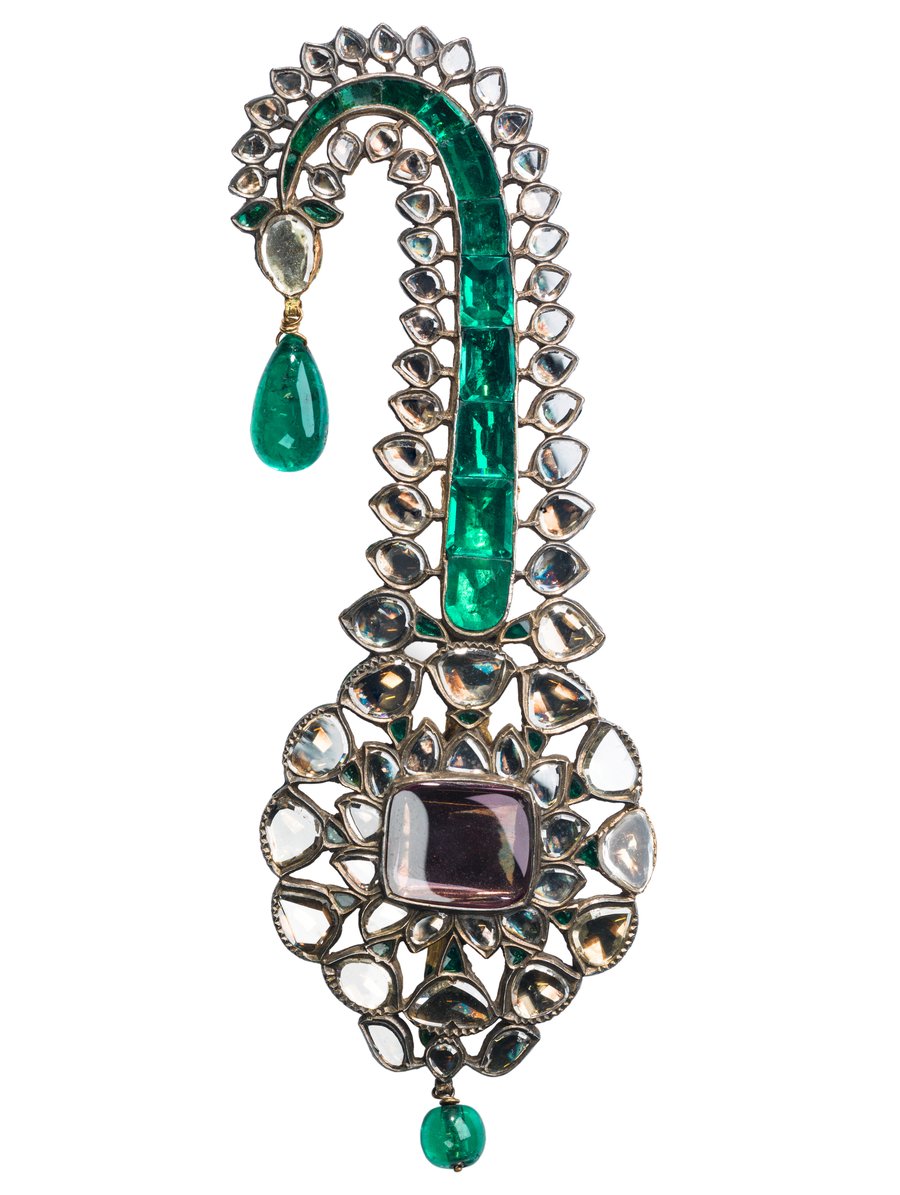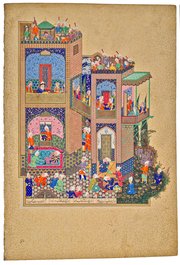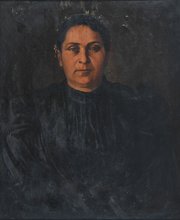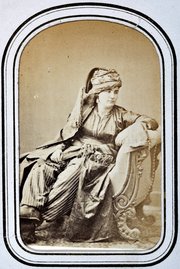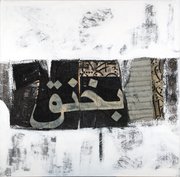
Turban Ornament (Jigha)
Museum of Islamic Art
- Title:
- Turban Ornament (Jigha)
- Production place:
- India
- Date:
- 1700 - 1799
- Period:
- Mughal
- Title:
- Turban Ornament (Jigha)
- Production place:
- India
- Date:
- 1700 - 1799
- Period:
- Mughal
- Material:
- Diamond, Enamel, Emerald, Spinel, Silver alloy, Gilding
- Technique:
- Gem setting, Enamelling, Gem cutting, Kundan, Gilding, Soldering
- Dimensions:
- 15 × 6.1
At the Mughal court, the use of jighas, or turban ornaments, was restricted to members of the royal family and those upon whom the Emperor bestowed great favour at the court. Designed as a floral plume, it was worn on the turban indicating high rank.
This fine jigha is set with diamonds, emeralds and one spinel. In the centre of the openwork foliate cluster panel, a rectangular spinel is surrounded by table-cut diamonds, suspending an emerald drop. The gem-set rosette is surmounted with rectangular-cut emeralds, a drop-shaped diamond boarder on both sides, and an emerald drop finial. The reverse of the jigha is decorated with fine floral enamelled motifs depicting red plants and flowerheads with green leaves on a white ground. For fastening, a pin hook was applied at the back. The technique of enamelling was probably imported by European jewellers who came to India during the 10th-11th century AH/16th and 17th century CE. The most famous enamels were created in Rajasthan in northern India, and often combined with precious gemstones.
